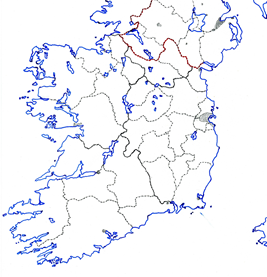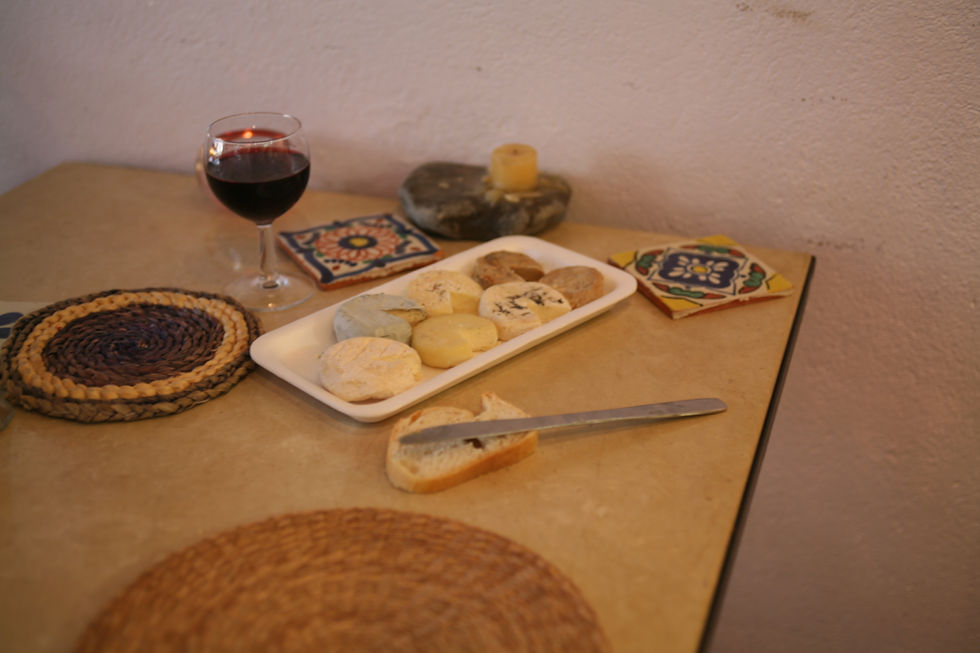(24) A compliment to the Green Land from a Frenchman living in England…
- C Demeyer
- Feb 5, 2022
- 5 min read
I would like, in this weekend of the start of the six nations tournament, pay homage to Ireland which had had a great team for the last 15 years. By this I do not mean to say that their team was no good before, only that I judge that these last years they had a particularly good time, and some amazing and great players.
First, I will talk about the Cashel Blue, a wonderful creamy product from the renaissance time of the Irish farmhouse cheesemaking. Nowadays, the second generation is in charge of the farm and cheese business.
Their second original product is the Crozier Blue, and is the second cheese that I will talk about, or more precisely give a description from my large description files.

I am still waiting to visit the Emerald Island
Their cheeses are well worth trying, then loving, and enjoying again, and again. The farm is nightly nestled in the middle of the beautiful Emerald Island in County Tipperary. I am still to visit this part of the world, but from all that I have heard about it, I will not be disappointed when I will be there.
So, please find below some description about these two lovely cheeses. It is noteworthy to note that sustainability and pride of the local community is important to the family and team working for the dairy. Of note as well, each cheese is made Organic as well as the original.
Cashel Blue
History
Louis Grubb, wife Jane and daughter Sarah as well, returned to the family farm in 1979 and made it a well-managed dairy concern. However, the situation was deteriorating as the price of drinking milk did not get any better and the work became routine at best. Jane had a chef background and attended a cheesemaker course. She started tentatively to make varied cheeses and in 1983 they were founding members of the CAIS, the Irish farmhouse association, and this gave them a good look at the market. In 1984 the first Cashel Blue is made, at a rate of eight per day to start with, and then Crozier Blue which was developed, in 1993, with the help of the head cheesemaker Geurt Van den Dikkenberg. Eleven years later Sarah and husband Sergio Furno returned to the family farm, again, fuelled by the incentive that her new husband had cheesemaking background, and they became responsible for the maturing cellar. From its creation Cashel has earned many awards and has been presented to Queen Elizabeth II during her state visit to Ireland in 2012. The name derives from a local landmark, the Rock of Cashel. It is widely exported to Europe and the United States with great success.
Area of production
This part of County Tipperary is made of gently rolling little hills with green gentle landscape. The pastures benefit from the famous green climate of Ireland, temperate all year round with high rainfall. The flora is well suited to animal grazing and composed of some wildflowers as it should be.
Production method
The milk is pasteurised and then prepared with starters and Penicillium Roqueforti. A small amount of rennet is used for coagulation, taking one hour, after which the curd mass is cut with a harp. Moulding is done in lightly perforated mould which are turned a few times for three days. The white cheese is then salted and pierced mechanically. It is then transferred to the maturing cellar, 10oc, where it is turned every day and monitored for blueness. Once it is ready it is wrapped in gold foil, thus limiting the blue spores’ development but helping the cheese becoming soft.
Look, taste, and flavour
Nice little round of cheese to look at, when you cut it reveals a pleasant mix of widely spread blue-grey mould on an ivory paste, more yellow if matured. The taste is rich, quite buttery with a marked piquant of the blue, and this means that a second taste is required to appreciate it fully with subtle notes of flora coming through later.
Safe keeping
to be consumed within the next few days when cut, wrap in foil or cling film and keep in refrigerator.
Statistics
240 tonnes (2010).
Crozier Blue
History
Louis Grubb, wife Jane and daughter Sarah as well, returned to the family farm in 1979 and made it a well-managed dairy concern. However, the situation was deteriorating as the price of drinking milk did not get any better and the work became routine at best. Jane had a chef background and attended a cheesemaker course. She started tentatively to make varied cheeses and in 1983 they were founding members of the CAIS, the Irish farmhouse association, and this gave them a good look at the market. In 1984 the first Cashel Blue is made, at a rate of eight per day to start with, and then Crozier Blue which was developed, in 1993, with the help of the head cheesemaker Geurt Van den Dikkenberg, as she was suffering from a bad back. Eleven years later Sarah and husband Sergio Furno returned to the family farm, again, fuelled by the incentive that her new husband had cheesemaking background, and they became responsible for the maturing cellar. The name comes from the Rock of Cashel and an old piece of silverware representing the staff of St Patrick, patron of Ireland, in the form of a crooked staff. Production was slow to start with, and in 1999 they had all the infrastructure in place and Crozier Blue became a feature in Ireland and the UK. It is packaged in silver foil.
Area of production
This part of County Tipperary is made of gently rolling little hills with green gentle landscape. The pastures benefit from the famous green climate of Ireland, temperate all year round with high rainfall. The flora is well suited to animal grazing and composed of some wildflowers as it should be. The sheep farm is next door to the dairy and looked after by Henry and Louis Clifton Browne, nephews of the Grubb family.
Production method
The milk is brought from the farm and pasteurised before lactic ferments and Penicillium Roqueforti are added for maturation. Vegetarian rennet is used for coagulation and the resulting curd lightly moulded. After drying the cheese is pierced in the maturing cellar to help in the development of the blue, and the cheese is wrapped in its specific silver foil. It can be matured up to eleven months, but this is rare.
Look, taste, and flavour
A small, tall round to look at, the cheese is soft with bright blue veins. It is compact when young and becomes creamy when matured for four months. Rich of texture and feel, it has an earthy feel with flowery notes and herbal undertones with a good sharpness from the blue, and when well-matured will develop a good balance.
Safe keeping
to be consumed within the next few days when cut, wrap in foil or cling film and keep in refrigerator.
Statistics
12 tonnes (2010).
And remember, as always, give life to your taste buds, and above all, enjoy real cheese.



Comments